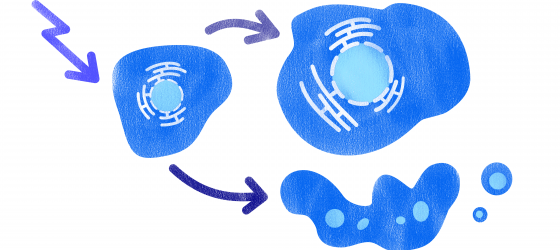Cellular adaptation is the ability of cells to respond to a wide variety of external or internal stressors and include the activation of signal pathways involved in cell survival as well as the movement of cells in response to chemical and/or mechanical signals. The disregulation of the above processes is involved inmany diseases, such as chronic inflammatory diseases, neurodegenerative diseases and cancer, and their investigation can shed light on new druggable targets to prevent and/or delay diseases
To study cell adaptive response dependent on the Nrf2 and heme oxygenase-1 (HO-1) pathway. Their involvement in degenerative conditions due to a loss of adaptation (neurodegeneration, vascular diseases, ageing), and in cancer progression characterized by increased adaptation are studied
Scientists: Furfaro A.L., Nitti M.
To characterize the functional features of the SH3 domain Binding Glutamic acid Rich Like 3 (SH3BGRL3) protein, its role in cell migration ability, and the network of its molecular interactions
Scientists: Ghiotto F.
To inspect protein aggregation due to the synthesis of aberrant Immunoglobulin µ (Ig-µ) chains. Abundantcargo loaded is a type of Endoplasmic Reticulum stress: we are interested to define the cellular mechanisms to this proteotoxicity.
Scientists: Valetti C.
